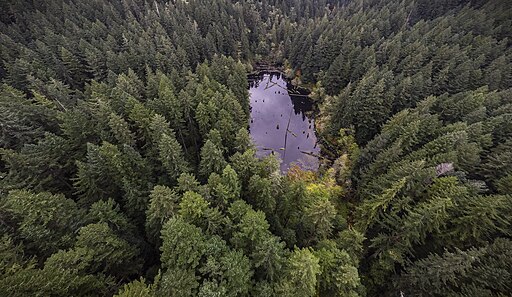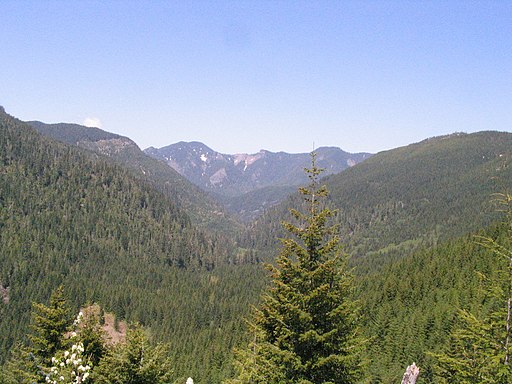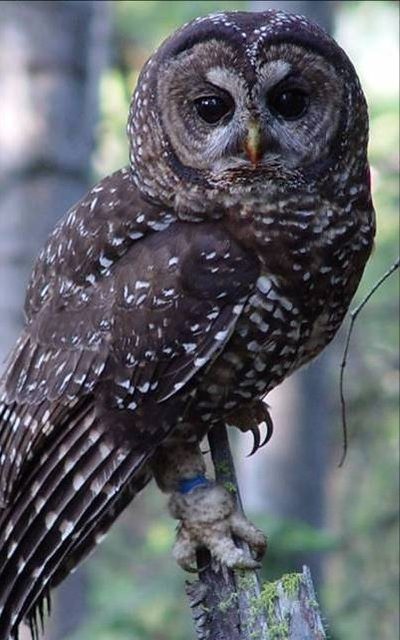Description
Coniferous forests dominate the landscape of the west Cascades ecoregion. Late successional forests are old growth forests that have survived for hundreds of years. These are found up to 4000 ft elevation and are pretty rare, as most forests have been logged at some point at least once. In western Oregon, Douglas fir is the dominant species in these forest types, as it is very adaptable to this climate and grows rapidly. This species is found up to 5000 ft elevation and is the staple of Oregon’s timber industry for its versatile use. Hardwood species are also prominent in these forests and include big leaf maple and red alder.

Vegetation
Douglas-Fir, western Hemlock and Western Red Cedar are the dominant tree species found in these habitat types. Other tree species include big leaf maple, red and white alder, bitter cherry, Grand Fir and sometimes Oregon ash. Understory species found in these habitats include Sword Fern, Salmonberry, Vine Maple, Salal, Western Trillium, Cascade Oregon grape, huckleberries, and much more.
Ecosystem Services
It is well known that trees are very important for air quality, as they are able to produce oxygen and absorb carbon dioxide from the air, acting as carbon sinks. They also provide countless other benefits to humans, animals, and soil and water. Here are just a few of the benefits that forests provide:
- Reduce air pollution
- Conserve water
- Reduce soil erosion
- Provide resources for building infrastructure
- Reduce noise pollution
- Provide habitat for birds, mammals, rodents, amphibians, invertebrates, and more.
Threats
Forests are under threat of harmful pests and diseases, over harvesting, invasive species, habitat loss due to development, and natural disasters like wildfire. We’ve seen the devastation to our forests, here in Marion county, due to the 2020 Labor Day fires that destroyed nearly 350,000 acres of forest land.
While diseases and pests are a natural occurrence to any forest ecosystem, there are those that are harmful to the health of our forests such as root rot, bark beetle, Emerald Ash Borer, and Swiss needle cast.
Read more about the threats to our local forest ecosystems and management at Oregon Forest Resource Institute.


Wildlife
It is easy to notice all of the wonderful habitat opportunities for wildlife as you walk through a healthy, mixed fir and hardwood forest. From the tall branches that keep birds away from predators, to nooks and crannies in the stumps and nurse logs that become home and food for invertebrates, mammals, and amphibians, and even the decaying organic matter that is now growing fungi on the forest floor. There are endless opportunities for shelter, food, and water in these ecosystems.
Some of the wildlife species you may find in these habitats include black bear, deer, elk, spotted owls, mountain lions, squirrels and chipmunks, salamanders, hummingbirds, and so much more.


What can you do to help these habitats?
Beneficial management of small woodlands on private properties can go a long way in restoring and conserving forest ecosystems. There’s plenty of opportunity for landowners and the public to get involved with conservation in forests.
Some practices that can help enhance your forested area include:
- Remove invasive species
- Reduce excessive fuel loads that can increase the risk of wildfire damage
- Plant more native plants and protect the native plant community
- Leave dead trees and snags for habitat
- Create brush piles for habitat
- Talk with your local Department of Forestry forester and Fish and Wildlife biologist about other ways to restore and improve your forest.
Where to find these habitats near you?
- Silver Falls State Park, Silverton.
- McDonald Dunn Forest, Corvallis.
- Santiam State Forest, Mill City. This is now remnants of what was once a healthy forest ecosystem, and now you can see the regrowth from the fire devastation and witness a new generation of forest.
- Mt. Hood National Forest.
- Mount Jefferson Wilderness area, east on Hwy 22. Please note that permits are required for any activity in this area from June 15th to October 15th.
Contact Us
To learn how to get assistance with your natural areas, reach out to our staff today!


